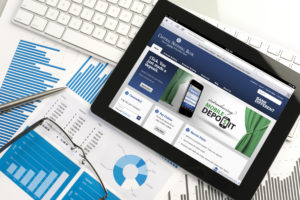Let’s face it, we all know that bankers are a little different. As a banker, I’m comfortable admitting that I do actually like to receive office supplies for Christmas. In fact, one year I was especially crazy and asked for the multi-colored set of paperclips. Outrageous, I know.
 As a banker, I’m also comfortable defending many of the seemingly-excessive applications, forms and documents (also known as “Mt. Paperwork”) that banks require as part of the loan process.
As a banker, I’m also comfortable defending many of the seemingly-excessive applications, forms and documents (also known as “Mt. Paperwork”) that banks require as part of the loan process.
But, in today’s regulatory environment, there are even more required documents that serve no clearly-identifiable purpose. I ask for these documents from customers each day. And, yet, when my husband and I purchased our last house less than a year ago, I became extremely agitated that these documents were being required of me! How hypocritical, right?
As a community bank, we aim to cut through the red tape of the loan process, and we constantly review our processes to eliminate unnecessary paperwork. But, some of it is necessary—for us, for the government, or both. So, what can you do to make this process less frustrating?
Making borrowing easier
Let’s take my example of purchasing a home, which is quite common. The primary required application—the Uniform Residential Loan Application—includes numerous sections and questions regarding your personal financial situation. This same information is required if you are purchasing investment real estate, borrowing for a business, etc.—just in a different form.
I have found that if I maintain a personal financial statement (saved on my computer), it can eliminate much of the frustration of completing applications and can, in many instances, be used in place of the application (or sections of the application) entirely.
What is a personal financial statement?
Just as businesses use financial statements to provide their leadership and investors with important financial information, a personal financial statement is used to give a lender a clear picture of a borrower’s financial position. This document, which is sometimes an Excel spreadsheet, typically includes a breakdown of your assets and liabilities.
Assets include account balances in checking or savings accounts, retirement account balances, stock or investment funds, as well as any real estate you own. Liabilities include credit card balances, loans and mortgages. The resulting difference between these two categories—assets and liabilities—represents your net worth.
But don’t just take my word for it
Here are a few tips for creating (and maintaining) your own personal financial statement:
- Utilize free resources.
- If you are a Central National Bank customer (or even if you aren’t), you can visit the Resources section of our Web site for commonly-used forms.
- Microsoft actually offers a free Excel download.
- Choose a date for your financial statement and update it regularly. For instance, I typically update mine as of each December 31. Quarter-ends (March 31, June 30, September 30, December 31) generally work best because many retirement fund values are available then.
- The appraisal district of the county in which you own real estate is a good resource for the value of most real estate. McLennan County’s Web site can be accessed by clicking here.
- The National Automotive Dealers Association (NADA) Web site is a good resource for vehicle values.
So, have fun creating your personal financial statement. Perhaps, it will ease a little of the pain of borrowing money and most certainly, it will give you a better understanding of your personal financial situation. Who knows? You might actually be the The Millionaire Next Door.
About the Author:
Carolyn Haferkamp is Central National Bank’s chief lending officer. In her spare time, she enjoys reading, entertaining, traveling, volunteering, and spending time with her husband and two young daughters.


